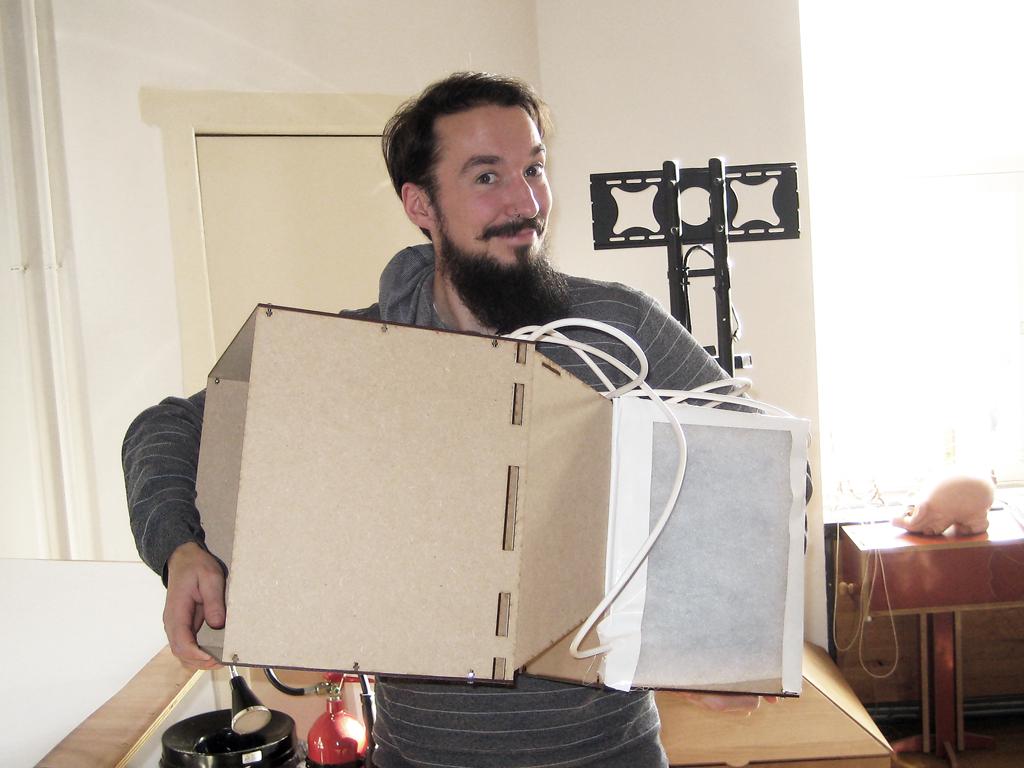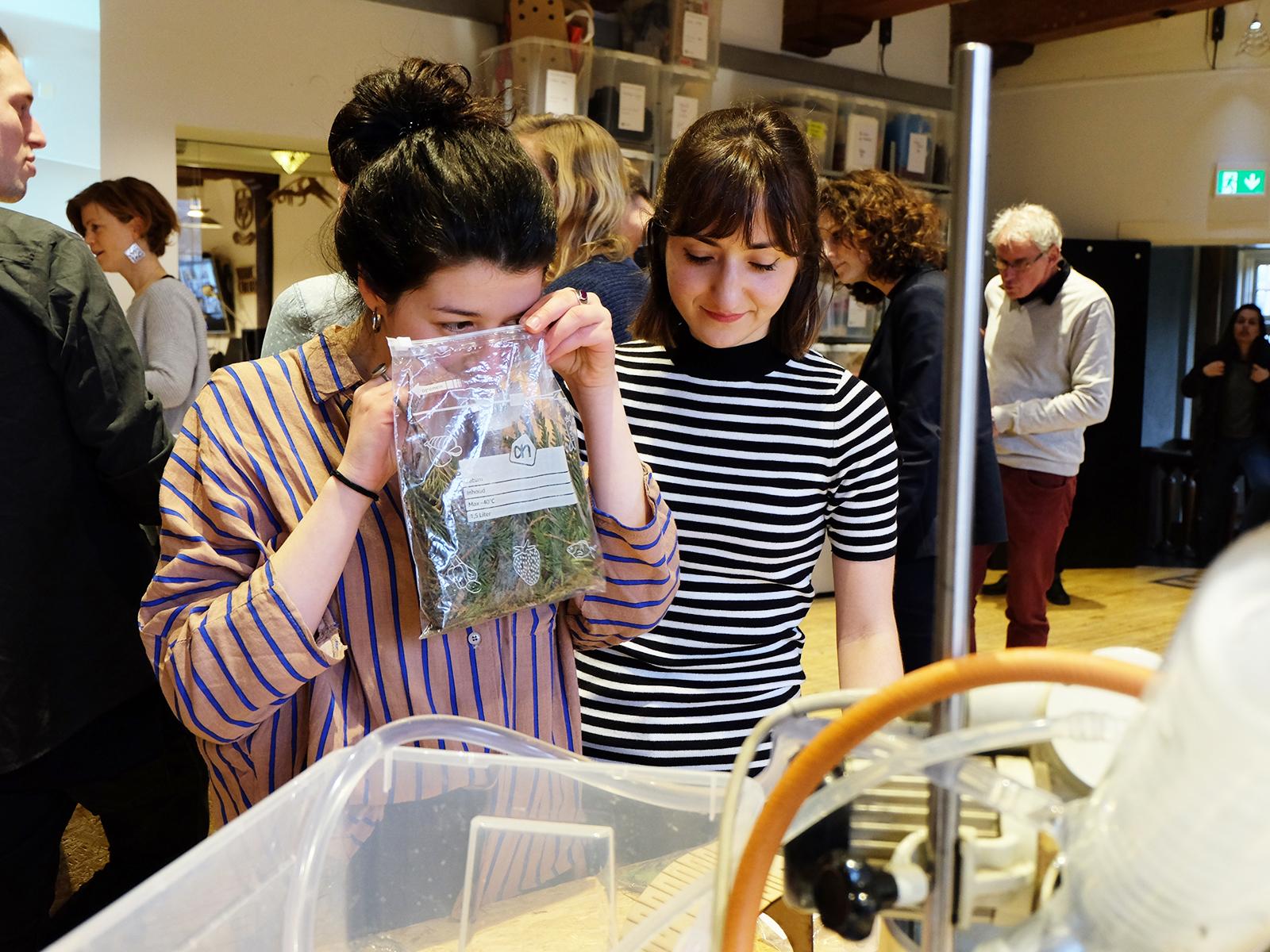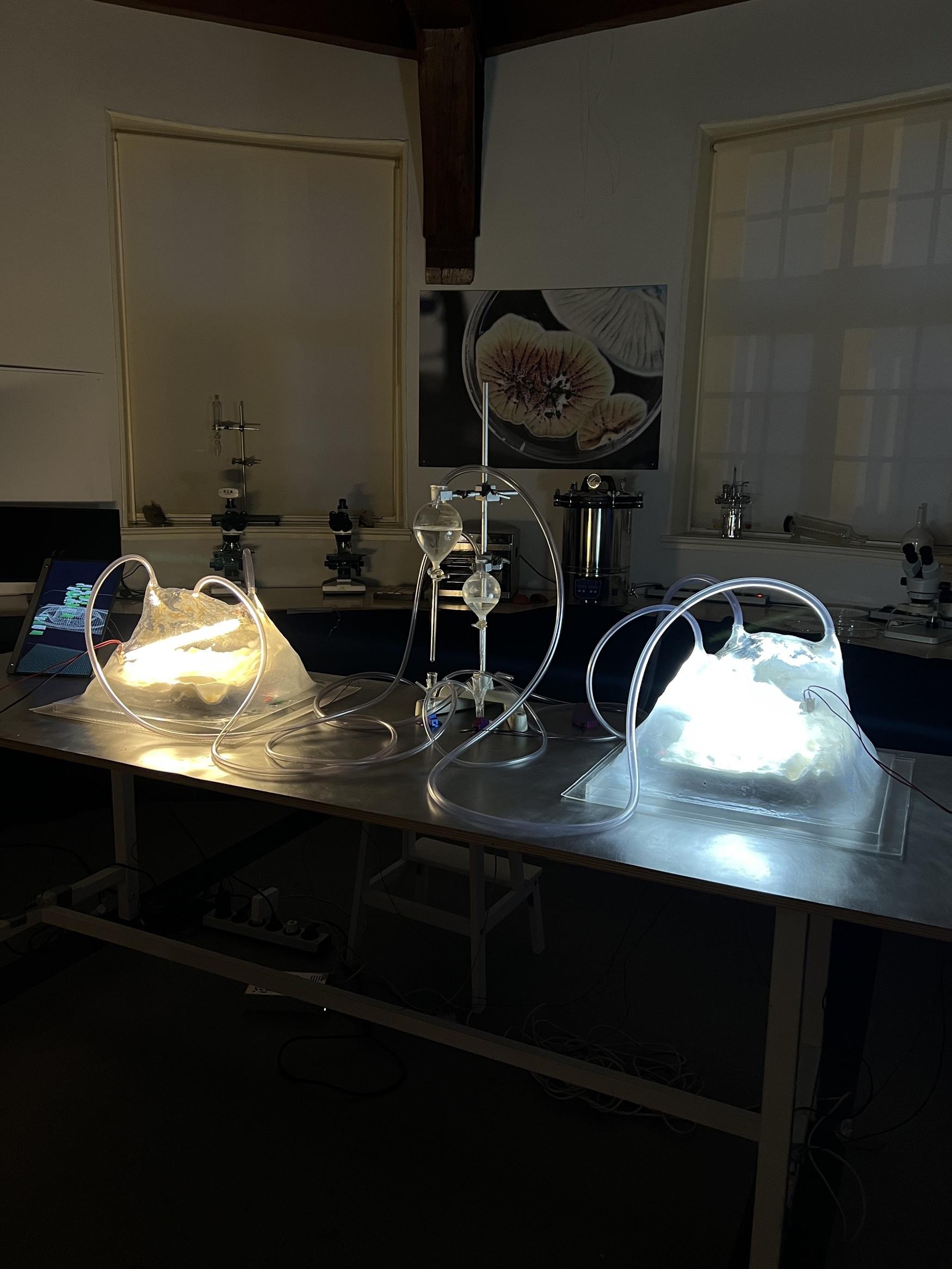On Tuesday February 17th, the BioHack Academy started on three continents. In São Paulo, Barcelona, New Mexico and Amsterdam participants gathered and connected by videostreaming to the first lecture by Pieter van Boheemen. Afterwards we gave the participants two challenging objectives and one assignment.
The assignment was to develop a documentation page to be able to share knowledge, experience and code. The platform Github was proposed and several students are already uploading their projects, ideas and inspirational pages. You can follow their progress here.

(All participants BHA 1, Spring 2015 - Photo: Laurel Daily)
The two objectives for this week were much more complex: build an incubator and start growing micro-organisms. On Monday morning, we started by making several mediums for the organism we wanted to isolate (yeast from beer and lactobacillus from yoghurt). It was essential to be sure that the organisms that will grow in these plates are the ones present in this food, so working in cleaning conditions and sterile environment was totally needed.
In order to understand how easy is to contaminate a plate, the first experiment was called “contamination test” and students were proposed to open a plate for a while in different places in the building and incubate them. One the medium was done, the practical consisted of pouring the plates on a clean table, close to the gas burner, wait until it was solid and inoculation. The beer and yoghurt micro-organisms inoculation required a dilution series to reduce the number of micro-organism in each plate. Apart from these micro-organisms, kombucha, spirulina and Photobacterium phosporeum were used after preparing their corresponding medium.

During the afternoon and next Tuesday, some of the participants started with the incubator design. Some decided to reproduce the incubator proposed on the Biohack Academy website, but others came up with different ideas: a transparent incubator, incubator with speakers or a bacterial race track. As a result the tables were full of electronics, wood, computers and people knowing each other, sharing objectives, ideas and proposals.
During the afternoon and next Tuesday, some of the participants started with the incubator design. Some decided to reproduce the incubator proposed on the Biohack Academy website, but others came up with different ideas: a transparent incubator, incubator with speakers or a bacterial race track. As a result the tables were full of electronics, wood, computers and people knowing each other, sharing objectives, ideas and proposals.
It was at the end of the day when the next lecture was carried out and a new assignment and objective was present: build a microscope and record a movie from it. Together with the incubator, bacteria, yeast, kombucha, and parallel projects, it seems that is going to be as busy week as the last one or even more. So, good luck biohackers!


